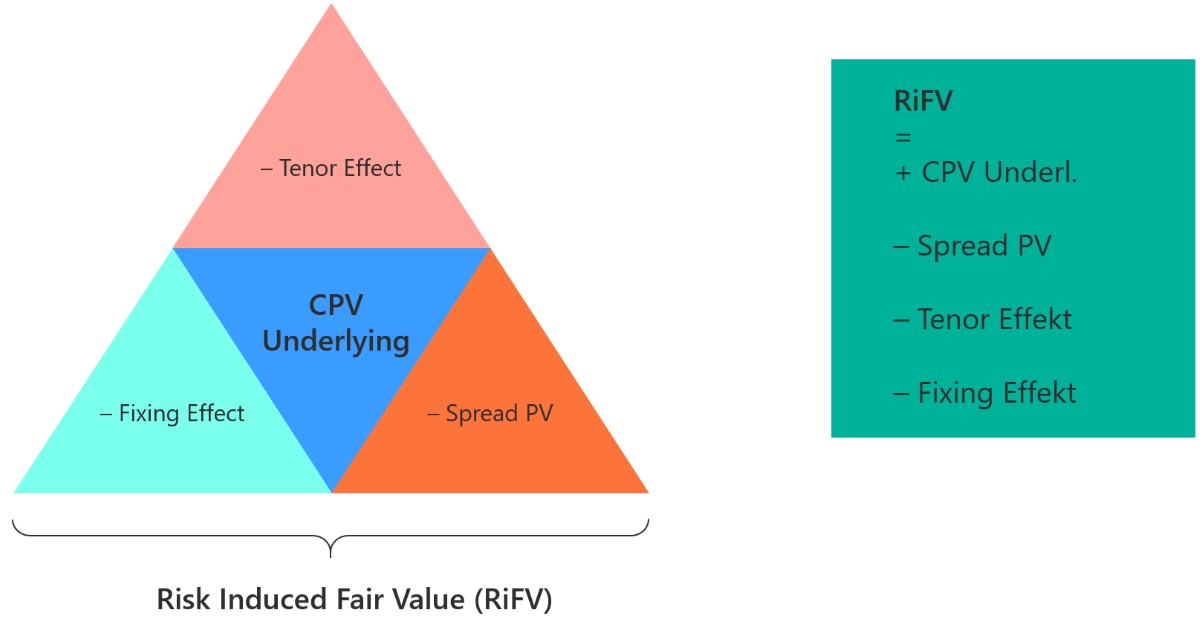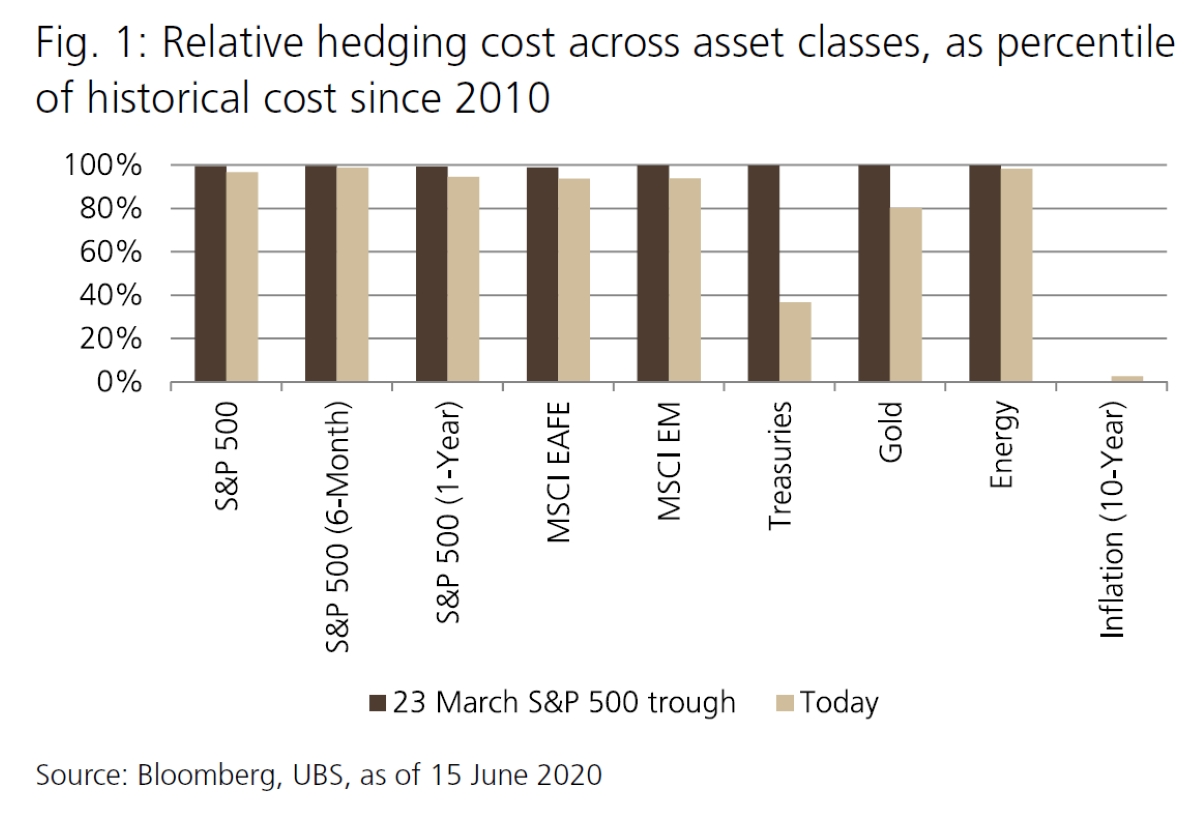

Finance
What Is Hedge In Accounting
Published: October 13, 2023
Learn what hedge means in accounting and how it relates to finance. Gain a comprehensive understanding of this important financial concept.
(Many of the links in this article redirect to a specific reviewed product. Your purchase of these products through affiliate links helps to generate commission for LiveWell, at no extra cost. Learn more)
Table of Contents
- Introduction
- Definition of Hedge in Accounting
- Purpose and Benefits of Hedge Accounting
- Types of Hedges
- Criteria for Qualifying for Hedge Accounting
- Measurement and Recognition of Hedge Accounting
- Effectiveness Testing and Documentation
- Discontinuation of Hedge Accounting
- Disclosure Requirements for Hedge Accounting
- Examples of Hedge Accounting in Practice
- Conclusion
Introduction
In the realm of accounting, the concept of hedging plays a crucial role in managing and mitigating financial risks. It is a strategy that allows businesses to protect themselves against adverse price movements, such as fluctuations in interest rates, foreign currency exchange rates, or commodity prices. By employing hedge accounting techniques, companies have the opportunity to minimize the potential impact of these risks on their financial statements.
At its core, hedge accounting involves matching the recognition of the gains or losses from a hedging instrument with the recognition of the gains or losses on the hedged item. This enables businesses to provide more accurate and transparent financial reporting, as it reflects the economic substance of their risk management activities.
In this article, we will delve into the realm of hedge accounting, exploring its definition, purpose, benefits, types, qualifying criteria, measurement, recognition, effectiveness testing, documentation, discontinuation, and disclosure requirements. Additionally, we will examine practical examples of hedge accounting in action.
Whether you are an accounting professional, a business owner, or simply someone interested in understanding the intricacies of financial risk management, this article will provide valuable insights into the world of hedge accounting and how it can be utilized to enhance financial stability and transparency.
Definition of Hedge in Accounting
In accounting, a hedge refers to a financial transaction or strategy that is undertaken to protect against potential losses resulting from adverse price movements. It is a risk management technique employed by businesses to minimize the impact of market fluctuations on their financial positions.
A hedge in accounting involves the use of derivative financial instruments, such as futures contracts, options, or swaps, to offset the potential gains or losses of an underlying asset or liability. The goal is to create a balance between the gains or losses on the hedging instrument and the changes in value of the hedged item, resulting in a net impact that effectively mitigates the financial risk.
By implementing hedge accounting, companies are able to align the recognition of gains or losses on the hedging instrument with the recognition of gains or losses on the hedged item. This helps to provide a more accurate and realistic representation of the financial performance and position of the business, as it reflects the economic substance of the risk management activities.
It is important to note that a hedge is not meant to generate profits, but rather to minimize the potential negative impact of price fluctuations. The primary objective is to reduce volatility and uncertainty, enabling businesses to make informed financial decisions and maintain stability in their operations.
In order to qualify as a hedge in accounting, certain criteria must be met. These criteria are designed to ensure that the hedging relationship is clearly defined, reliably measurable, and highly effective in reducing the risk exposure of the business.
Next, let’s explore the purpose and benefits of hedge accounting in detail.
Purpose and Benefits of Hedge Accounting
The primary purpose of hedge accounting is to provide businesses with a framework for effectively managing and reporting their financial risks. By employing hedge accounting techniques, companies can achieve several key benefits:
- Risk management: Hedge accounting enables businesses to mitigate the potential adverse effects of price fluctuations on their financial positions. By using derivative instruments to offset the gains or losses of the underlying assets or liabilities, companies can minimize the volatility and uncertainty associated with market fluctuations.
- Accurate financial reporting: By aligning the recognition of gains or losses on the hedging instrument with the recognition of gains or losses on the hedged item, hedge accounting provides a more accurate and transparent representation of the business’s financial performance and position. This allows stakeholders, including investors, lenders, and regulators, to make more informed decisions based on reliable and consistent financial information.
- Enhanced financial stability: Hedge accounting helps businesses maintain financial stability by reducing the impact of price fluctuations on their earnings and cash flows. This, in turn, provides greater certainty and predictability in the company’s financial results, enabling it to better plan and allocate resources.
- Compliance with accounting standards: Hedge accounting allows businesses to comply with the requirements set forth by accounting standards, such as the International Financial Reporting Standards (IFRS) and the Generally Accepted Accounting Principles (GAAP). These standards provide guidelines for recognizing and measuring hedging instruments and hedged items, ensuring consistency and comparability in financial reporting across different organizations.
- Improved investor confidence: A company that effectively utilizes hedge accounting techniques demonstrates its commitment to managing and mitigating financial risks. This can instill confidence in investors, as it shows that the company has a proactive approach to protecting its financial position and maximizing shareholder value.
Overall, hedge accounting is a valuable tool that allows businesses to manage financial risks, enhance transparency in financial reporting, and maintain stability in their operations. By implementing effective hedge accounting strategies, companies can navigate the complexities of an ever-changing market environment, ultimately improving their financial performance and resilience.
Now, let’s explore the different types of hedges that can be utilized in hedge accounting.
Types of Hedges
In hedge accounting, there are three main types of hedges that businesses can utilize to manage and mitigate financial risks:
- Fair Value Hedges: Fair value hedges are used when a company wants to offset the changes in fair value of a recognized asset or liability caused by fluctuations in market prices. In this type of hedge, both the hedging instrument and the hedged item are measured at fair value, and the changes in the fair value of both are recognized in the income statement. The objective is to ensure that any gains or losses on the hedging instrument offset the gains or losses on the hedged item, reducing the volatility in financial results.
- Cash Flow Hedges: Cash flow hedges are employed when a company wants to mitigate the impact of future cash flow fluctuations resulting from changes in market prices. The hedging instrument is used to secure the future cash flows associated with a recognized asset or liability, such as a forecasted purchase or sale of goods or services, or fixed-rate debt. In this type of hedge, the changes in the fair value of the hedging instrument are initially recognized in other comprehensive income (OCI) and subsequently reclassified to the income statement when the hedged item affects profit or loss. The goal is to create an offset between the gains or losses on the hedging instrument and the changes in cash flow of the hedged item, ensuring stability in future cash flows.
- Net Investment Hedges: Net investment hedges are utilized when a company has foreign investments, and it wants to protect the value of those investments against foreign currency exchange rate fluctuations. The hedging instrument is used to offset the changes in the fair value of the net investment in a foreign operation. Similar to cash flow hedges, the changes in the fair value of the hedging instrument are recorded in OCI. The objective of net investment hedges is to minimize the volatility in the company’s consolidated financial statements due to changes in exchange rates.
It’s important to note that each type of hedge has specific requirements and criteria in order to qualify for hedge accounting treatment. These criteria ensure that the hedging relationship is well-defined, measurable, and effective in reducing financial risk.
Now that we have explored the different types of hedges, let’s examine the criteria for qualifying for hedge accounting in more detail.
Criteria for Qualifying for Hedge Accounting
In order for a hedge to qualify for accounting treatment under hedge accounting, certain criteria must be met. These criteria help ensure that the hedging relationship is well-defined, measurable, and highly effective in reducing the financial risk for the business. The key criteria for qualifying for hedge accounting are as follows:
- Formal designation and documentation: The hedge relationship must be formally designated and documented at the inception of the hedge. The documentation should clearly identify the hedging instrument, the hedged item, the risk being hedged, and the method of assessing hedge effectiveness. The intent and effectiveness of the hedge should be documented to show that it is a risk management strategy.
- Effectiveness testing: The hedge must demonstrate an appropriate level of effectiveness in offsetting the changes in fair value or cash flows of the hedged item. Effectiveness is measured by comparing the changes in fair value or cash flows of the hedging instrument and the hedged item. Generally, a range of 80% to 125% is considered acceptable for effectiveness testing.
- Highly effective hedge: The hedge must be deemed highly effective throughout its duration. If it is determined that the hedge is not highly effective, it may result in discontinuation of hedge accounting and recognition of gains or losses on the hedging instrument in the income statement.
- Economic relationship: There must be an economic relationship between the hedging instrument and the hedged item. This means that the hedging instrument must have a direct impact on the fair value or cash flows of the hedged item. The relationship should be clearly defined and supported by reliable data and analysis.
- Prospective and retrospective assessment: The effectiveness of the hedge should be assessed prospectively and retrospectively on an ongoing basis. Prospective assessment involves predicting the effectiveness of the hedge based on historical and expected future data, while retrospective assessment involves comparing the actual results of the hedge to the predicted outcomes.
To qualify for hedge accounting, a business must meet all of these criteria and maintain accurate records and documentation to support the hedge relationship. Failure to meet the criteria can result in the discontinuation of hedge accounting treatment and a potential increase in financial volatility.
Next, let’s explore the measurement and recognition of hedge accounting in more detail.
Measurement and Recognition of Hedge Accounting
When it comes to hedge accounting, measurement and recognition play a crucial role in accurately reflecting the impact of hedging activities on a company’s financial statements. The following are important considerations in the measurement and recognition of hedge accounting:
1. Fair Value Measurement: The fair value of both the hedging instrument and the hedged item is a key component of measuring and recognizing hedge accounting. Fair value represents the estimated price that would be received to sell an asset or paid to transfer a liability in an orderly transaction between market participants at the measurement date. Fair value is typically determined based on observable market data or calculated using valuation techniques.
2. Hedge Ineffectiveness: Hedge effectiveness is an important aspect of hedge accounting. In cases where the hedge relationship is not considered to be highly effective, hedge ineffectiveness needs to be recognized. Hedge ineffectiveness refers to the portion of the change in fair value or cash flows of the hedged item that is not offset by the changes in fair value or cash flows of the hedging instrument. This portion is recognized immediately in the income statement.
3. Hedge Accounting Adjustments: Any gains or losses on the hedging instrument that are deemed to be effective in offsetting the changes in the fair value or cash flows of the hedged item are generally recognized in other comprehensive income (OCI). These gains or losses are subsequently reclassified to the income statement, in the same period or periods during which the hedged item affects profit or loss.
4. Accruals and Amortizations: In certain cases, such as in cash flow hedges or fair value hedges with time value adjustments, hedge accounting involves accruals and amortizations. Accruals are recorded to adjust the carrying amount of the hedged item or the hedging instrument, while amortizations are recognized to allocate hedge components (such as time value) to the income statement over time.
5. Hedge Accounting Disclosures: Proper disclosure is required for hedge accounting to provide transparency and enable users of financial statements to better understand the nature and impact of a company’s hedging activities. Disclosures should include details about the objectives, strategies, and risks associated with hedge accounting, as well as quantitative information about the fair value of hedging instruments, hedged items, and related gains or losses.
It is important for companies to carefully measure and recognize the impact of hedge accounting in accordance with applicable accounting standards, such as IFRS or GAAP. This ensures that the financial statements accurately represent the company’s risk management activities and help stakeholders make informed decisions.
Next, let’s explore the process of effectiveness testing and documentation in hedge accounting.
Effectiveness Testing and Documentation
In the realm of hedge accounting, effectiveness testing and documentation are essential components to demonstrate the reliability and credibility of hedging relationships. These processes involve evaluating the degree of offset between changes in the fair value or cash flows of the hedging instrument and the hedged item. Here’s a closer look at effectiveness testing and documentation:
Effectiveness Testing: Effectiveness testing is conducted to assess the extent to which the hedging instrument is offsetting the changes in fair value or cash flows of the hedged item. The goal is to determine if the hedging relationship is highly effective, meaning it achieves the desired level of risk reduction. Various methods can be used to test effectiveness, including the dollar-offset method, regression analysis, and statistical tests. The commonly accepted threshold for effectiveness ranges from 80% to 125%.
Prospective and Retrospective Assessments: Effectiveness testing involves both prospective and retrospective assessments. Prospective assessments are conducted before the hedging relationship begins, utilizing historical and expected future data to predict the expected effectiveness of the hedge. Retrospective assessments are performed during the life of the hedge to compare the actual hedge results with the predictions made during the prospective assessment. If the hedge is not deemed highly effective based on either prospective or retrospective testing, it may result in changes to the accounting treatment.
Documentation: Proper documentation is crucial in hedge accounting to provide evidence and support the effectiveness of the hedging relationship. Companies should maintain detailed records that clearly define the hedging strategy, identify the hedging instruments and hedged items, outline the risk being hedged, and describe the method used to assess effectiveness. The documentation should also encompass any changes made to the hedge relationship and the rationale behind those changes.
Continuous Monitoring: Effectiveness testing and documentation are not one-time activities but rather ongoing processes throughout the life of the hedge. It is essential to continuously monitor the effectiveness of the hedge and update the documentation as needed to reflect any changes in market conditions or company circumstances. This ensures that the hedge accounting treatment remains accurate and compliant with accounting standards.
Effectiveness testing and documentation provide transparency and credibility to the hedging activities of a company, building confidence among stakeholders such as investors and auditors. By accurately assessing and documenting the effectiveness of hedging relationships, companies can demonstrate their commitment to transparent financial reporting and sound risk management practices.
Next, let’s explore the discontinuation of hedge accounting and the factors involved.
Discontinuation of Hedge Accounting
In certain circumstances, a company may need to discontinue hedge accounting for a particular hedging relationship. Discontinuation typically occurs when the hedging relationship no longer meets the criteria for hedge accounting, resulting in changes to the accounting treatment. Here are some key factors that can lead to the discontinuation of hedge accounting:
Ineffectiveness: If a hedge relationship is assessed as being no longer highly effective, hedge accounting may be discontinued. Ineffectiveness can occur when there is a significant mismatch between the changes in fair value or cash flows of the hedging instrument and the hedged item. When hedge effectiveness falls outside of the acceptable range (typically 80% to 125%), companies will need to recognize any gains or losses on the hedging instrument directly in the income statement.
Lack of Documentation: Adequate documentation is essential to support the effectiveness of a hedging relationship. If a company fails to maintain proper documentation or if the documentation fails to demonstrate the necessary criteria for hedge accounting, discontinuation may be required. It is essential to maintain comprehensive records that outline the objectives, strategies, risk being hedged, and effectiveness testing results.
Changes in Risk Management Strategy: If a company alters its risk management strategy and the existing hedging relationship no longer aligns with the new strategy, discontinuation of hedge accounting may be necessary. For example, if a company changes its hedging instrument or the risk being hedged, it may result in the need to reassess the effectiveness and suitability of the current hedge relationship.
Hedge Maturity or Termination: A hedging relationship may reach its maturity date or be terminated prematurely due to various reasons such as early settlement or changes in business operations. When this occurs, companies must reassess the effectiveness of the hedge relationship and consider discontinuing hedge accounting if the criteria are no longer met.
Regulatory Changes: Changes in accounting standards or regulatory requirements can also impact the eligibility for hedge accounting. If the changes render the hedging relationship no longer compliant with the accounting standard or regulatory framework, discontinuation may be necessary.
When discontinuing hedge accounting, companies will need to adjust their financial statements to reflect the changes. Any gains or losses on the hedging instrument that were previously recognized in other comprehensive income (OCI) will be reclassified to the income statement. It is important for companies to communicate the discontinuation and the resulting impact on the financial statements to stakeholders.
Proper documentation and effective monitoring of hedging relationships can help companies identify the need for discontinuation in a timely manner. By adhering to the criteria and diligently assessing the effectiveness of hedges, companies can ensure accurate and compliant financial reporting.
Next, let’s explore the disclosure requirements for hedge accounting.
Disclosure Requirements for Hedge Accounting
Disclosure requirements play a crucial role in hedge accounting, as they provide transparency and insight into a company’s risk management activities. Proper disclosure helps stakeholders understand the nature, impact, and effectiveness of hedges and allows for better evaluation of a company’s financial position and performance. Here are some key disclosure requirements for hedge accounting:
Nature of Hedges: Companies are required to disclose the nature of their hedging activities and the types of hedges employed. This includes providing details on whether the hedges are fair value hedges, cash flow hedges, or net investment hedges. The disclosure should outline the objectives and strategies behind the hedges, as well as the risks being mitigated.
Hedged Items and Instruments: Companies must disclose the specific items that are being hedged and the corresponding hedging instruments used. This includes identifying the hedged assets, liabilities, or forecasted transactions, as well as specifying the derivative instruments or other financial instruments employed for hedging purposes.
Effectiveness Assessment: Disclosures should include information on the assessment of hedge effectiveness. Companies need to disclose the criteria used to assess effectiveness and provide details on the methods employed, such as dollar-offset method or regression analysis. The disclosure should also include the results of the effectiveness testing and whether the hedges are considered highly effective.
Fair Value and Cash Flow Information: Companies are required to disclose the fair value of the hedging instruments, as well as the changes in fair value or cash flows related to the hedged items. This information provides insight into the impact of hedging activities on the financial statements and allows stakeholders to evaluate the effectiveness of the hedges.
Risk Exposures and Management: Disclosures should outline the underlying risk exposures that are being hedged, such as interest rate risk, foreign exchange risk, or commodity price risk. Companies should also provide information on their risk management policies, including the objectives, strategies, and techniques employed to mitigate the identified risks.
Affected Financial Statements: Companies must disclose the financial statements impacted by hedge accounting. This includes specifying whether the gains or losses on the hedging instruments are recognized in the income statement, other comprehensive income (OCI), or both, and when they are reclassified from OCI to the income statement.
Changes in Hedge Accounting Policies: If there have been any changes in the company’s hedge accounting policies or methods, it is important to disclose the nature of the changes and the reasons behind them. This provides transparency and allows stakeholders to understand any potential impact on the financial statements.
Proper disclosure in hedge accounting is crucial for providing meaningful and reliable financial information to stakeholders, including investors, lenders, and regulators. These disclosures help foster transparency, accountability, and informed decision-making.
Next, let’s explore practical examples of hedge accounting in practice to further illustrate its application.
Examples of Hedge Accounting in Practice
To better understand how hedge accounting is applied in real-world scenarios, let’s explore a couple of practical examples:
Example 1: Fair Value Hedge – Interest Rate Swap:
A company has issued a fixed-rate bond and is concerned about the potential impact of rising interest rates on the bond’s fair value. To hedge this risk, the company enters into an interest rate swap agreement with a financial institution. The swap agreement involves exchanging fixed interest rate payments for floating interest rate payments based on an agreed-upon benchmark rate.
In this fair value hedge, the company designates the interest rate swap as the hedging instrument and the bond as the hedged item. As interest rates change, the fair value of the bond will fluctuate inversely to the value of the interest rate swap. Any changes in the fair value of the interest rate swap are recognized in the income statement, offsetting the changes in the fair value of the bond. This hedge accounting treatment allows the company to provide a more accurate representation of the impact of interest rate fluctuations on its financial statements.
Example 2: Cash Flow Hedge – Foreign Currency Exposure:
A multinational company has significant operations in a foreign country and is exposed to currency exchange rate fluctuations. To mitigate this risk, the company enters into a forward contract to sell foreign currency at a fixed exchange rate in the future, effectively locking in the exchange rate for future cash flows denominated in that currency.
In this cash flow hedge, the company designates the forward contract as the hedging instrument and the forecasted foreign currency cash inflows or outflows as the hedged items. Any changes in the fair value of the forward contract are initially recognized in other comprehensive income (OCI). When the forecasted transaction affects profit or loss, the accumulated gains or losses from OCI are reclassified to the income statement, offsetting the impact of the foreign currency exchange rate fluctuation on the cash flows.
These examples demonstrate how hedge accounting can be applied to manage the financial risks faced by businesses. By aligning the recognition of gains or losses on the hedging instruments with the recognition of gains or losses on the hedged items, hedge accounting allows for more accurate and transparent financial reporting.
Now, let’s conclude our discussion on hedge accounting.
Conclusion
Hedge accounting serves a vital role in financial risk management and accurate financial reporting for businesses. By employing hedging strategies and adhering to specific criteria, companies can mitigate the impact of market fluctuations on their financial positions.
Throughout this article, we have explored the definition of hedge accounting, its purpose, benefits, and various types of hedges, including fair value hedges, cash flow hedges, and net investment hedges. We have also discussed the criteria for qualifying for hedge accounting, including formal designation and documentation, effectiveness testing, economic relationship, and prospective and retrospective assessments.
Moreover, we have examined the importance of measuring and recognizing hedge accounting, including fair value measurements, hedge ineffectiveness, hedge accounting adjustments, and proper accruals and amortizations. We also emphasized the significance of conducting effectiveness testing and maintaining thorough documentation to support hedging relationships throughout their duration.
We have delved into the circumstances that may lead to the discontinuation of hedge accounting, such as ineffectiveness, lack of documentation, changes in risk management strategy, hedging maturity or termination, and regulatory changes. And lastly, we have discussed the essential requirement of disclosing relevant information about hedging activities, including the nature of hedges, hedged items and instruments, effectiveness assessment, fair value and cash flow information, risk exposures and management, affected financial statements, and changes in hedge accounting policies.
Understanding hedge accounting is crucial for businesses in managing financial risks and providing transparent financial reporting. By implementing effective hedge accounting techniques, companies can enhance stability, accurately reflect their risk management activities, and instill investor confidence.
While this article has provided an overview of hedge accounting, it is important to seek further guidance and consult accounting standards, such as IFRS or GAAP, for specific requirements and detailed implementation guidelines. By applying hedge accounting appropriately, companies can navigate the complexities of financial markets and maximize their potential for long-term success.














